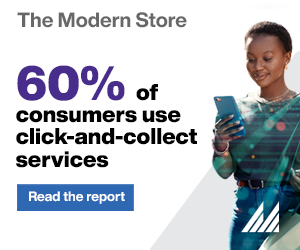Study quantifies value of loyalty programmes
Initial findings from a global study to establish operational and performance benchmarks for loyalty programmes
The customer loyalty sector has traditionally suffered from a lack of good benchmarks to act as guidance in assessing programme performance and optimising programme design.
An in-depth global study by The Loyalty Science Lab, a not-for-profit academic research unit of Old Dominion University based in Virginia, USA and Customer Strategy Network has been specifically designed to address this issue.
The research is designed to provide loyalty programme operators with industry standard benchmarks that enable them to measure programme performance relative to their competition.
The study requires programme operators to share active and new member acquisition numbers, as well as the type and value of the scheme’s accumulation system.
Loyalty programme value
Four findings from the global study, which includes the anonymised performance data from over 60 participating programme operators, have been shared exclusively with Retail Technology magazine.
Loyalty's Power to Drive Revenue - For the programmes that participated in the study, loyal members are worth, on average, 3.5 times more than non-members, with some exceptional programmes achieving ratios as high as 12.6x.
Additionally, programmes are seeing an average 35% revenue lift from loyalty initiatives, with the highest performer achieving a 91% lift.
These metrics support the business case behind loyalty investment and suggest opportunities for programmes currently below these benchmarks.
The Transaction-Redemption Gap - The data so far reveals a large gap between transaction activities and redemption activities.
While transaction-based active membership averages 53%, redemption-based active membership drops to just 35%.This 18-percentage point difference highlights an opportunity for programmes to drive more value through increased engagement based on redemption.
Programmes that close this gap may see stronger emotional connections with members, increased programme satisfaction, and better long-term retention than those that allow earned points to sit unused in member accounts.
Programme Economics - The study sees a substantial average breakage rate of 26% (with a median of 30%), indicating that more than a quarter of all issued loyalty points are never redeemed by members.
Programmes naturally count on this expected non-redemption when building their financial models. The strategic question for operators becomes whether high breakage rates should be viewed as a financial benefit to the programme or an indicator of engagement failure.
The best programmes need to balance financial sustainability with encouraging meaningful redemption that strengthens brand relationships.
Reward Timing - The anonymised performance data reveals an average reward velocity of seven months (median: six months), providing a crucial planning metric for loyalty program design and management.
This timeframe necessitates thoughtful interim engagement tactics to maintain member interest during the accumulation phase.
Programme operators might consider implementing milestone achievements, progress notifications, or smaller "quick win" rewards to bridge this gap. Loyalty operators should evaluate whether their specific reward velocity aligns with both their financial model and their customers' category-specific expectations for reward timing.
Considering data privacy
Given the sensitivity of the performance data, the study is administered by The Loyalty Science Lab to provide both academic rigour and, as a non-commercial entity, a high degree of protection over the anonymity of the data.
Only the Loyalty Science Lab is aware of the identity of the participating programmes for the purpose of issuing participant reports.
All responses are anonymised and no identifiable information concerning individual programmes is shared with ANY commercial entity, including the partners and sponsors of this study.
Customised performance reports
Participating operators receive a customised report, showing both their programme metrics and how they compare with benchmarks established through the study data.
The customised report only contains the metrics that can be calculated from the data supplied about each programme, while all responses are kept strictly confidential.
Programme operators can access their own customised report by taking the free survey, here.






